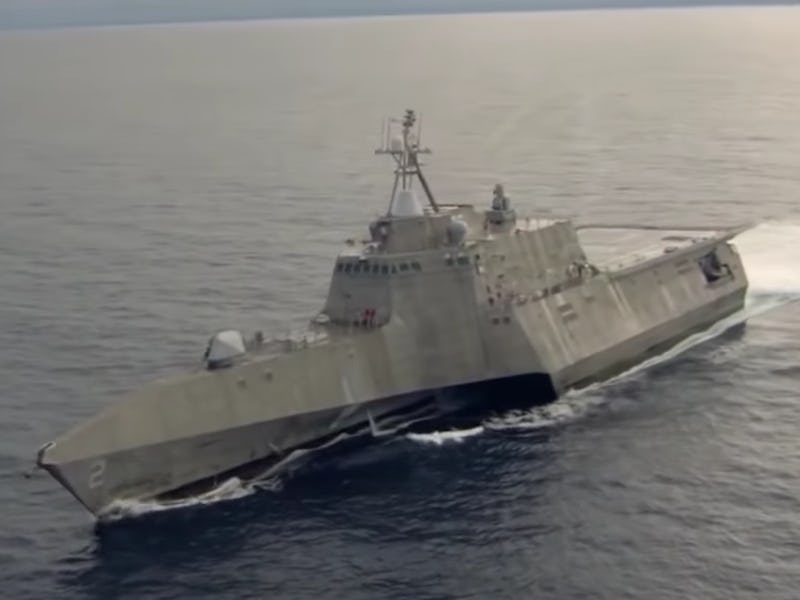Navy Calls Controversial Littoral Combat Ships the 'Future' of Sea Warfare
They cost $400 million a vessel, but do they work?

The Navy is doubling down on a controversial warship design critics say isn’t worth its $400 million price tag.
Littoral Combat Ships have been sold as the future of naval warfare — vessels designed to be relatively low-cost, with an ability to easily switch out combat modules within 72 hours for missions as varied as sweeping for underwater mines or fighting off a hostile enemy.
But delays in developing the modules and design compromises meant to lower costs has crippled the ships’ abilities, critics claim.
“The problem is the ships’ capabilities are virtually nil. The Navy was just stupid in the way they executed the program,” said Norman Polmar, who’s advised three U.S. Secretaries of the Navy and two chiefs of naval operations, in an interview with the Milwaukee Journal-Sentinel.
Yet, on Monday the Navy announced it would pay Lockheed Martin a balance of $279 million to finish construction of a future LCS vessel, the USS Cooperstown. The corporation has already built three such ships — the USS Freedom, the USS Fort Worth, and the USS Milwaukee — with six more in differing stages of construction. The USS Freedom was the first of these to officially join the Navy’s active fleet in 2008.
Foreign navies are being courted to buy future models and the Navy reportedly wants at least 52 built.
The newest LCS, the USS Milwaukee, was commissioned on November 21 and will report for duty in the South China Sea, despite concerns that it has less armor and firepower than most larger ships.